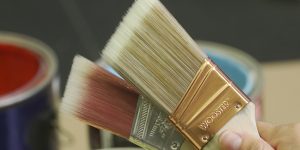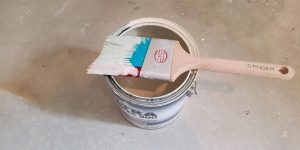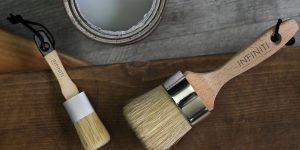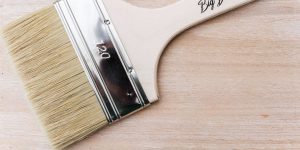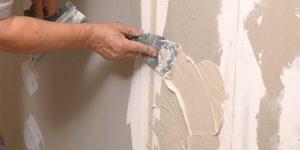Neglecting proper brush care can lead to irreversible damage, affecting not only the tool itself but also the quality and consistency of your output.
In this article, I will explain how to keep paint brushes from drying out. We explore the simple yet effective techniques to preserve the longevity and functionality of these essential instruments. By understanding the significance of brush preservation, you can use it, knowing that your tool is primed for optimal performance!
Preventing drying during active painting

By employing some useful techniques, which I will describe, you can keep your paintbrush less dry while painting and maintain a more workable consistency of the paint for smoother application and blending.
Keeping the brush loaded with paint or primer
A well-loaded brush ensures consistent coverage across the surface you are working on. When the brush is adequately full of paint or primer, it helps to eliminate streaks, patches, or uneven color distribution, creating a professional-looking finish.
Ensuring it remains loaded, you prevent paint drying on brush while painting too quickly. This is especially important in scenarios where you are working on a larger project or in warm, dry environments.
Using a paint tray or bucket with a reservoir
Any of these tools provide a larger capacity for holding paint or primer. This ensures that you have an abundant supply readily available, reducing the frequency of refilling and allowing for uninterrupted painting sessions. The increased capacity is particularly beneficial when covering extensive surfaces.
Techniques for keeping the brush moist while painting walls or surfaces
To prevent the paint from drying too quickly, I’ll teach you 4 useful methods you can use to keep your brush moist while painting:
- Moisturize with water: Keep a container of clean water nearby while painting. Make sure to tap off the excess water before reloading the brush with paint.
- Mist the brush: Use a spray bottle to lightly spray it periodically.
- Use a wet sponge or cloth: Wipe the brush gently after each use. This can help remove any dried or excess paint and keep it soft.
- Cover the paint container: When you’re not actively using the paint, close the container with a lid or plastic wrap to minimize air exposure.
Preventing drying during long breaks
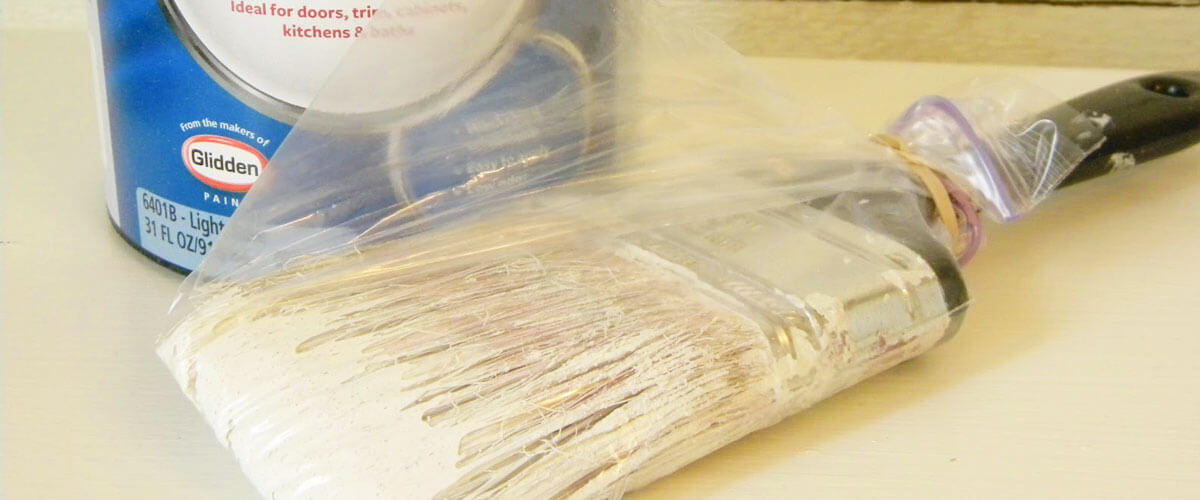
By using my recommendations, you can ensure the brush remains in good condition for your next painting session.
Thoroughly clean the brush before the break
Use the edge of the paint container or a brush scraper to remove as much excess paint as possible. Hold the brush under a faucet, or use a water container to rinse it. Gently squeeze and massage the bristles to loosen and release the paint.
If the paint is stubborn or water alone is insufficient, you can add a small amount of mild liquid soap or brush cleaner. Rinse the brush thoroughly to remove all soap residue. You can use a clean cloth or paper towel to blot and absorb the moisture. Avoid wringing or twisting, as it can damage the bristles. Then lay it flat or hang it upside down to dry completely.
Wrapping the brush in plastic wrap or aluminum foil
When you wrap the brush, it creates a barrier that prevents the paint or any remaining water on the brush from evaporating too quickly, keeping it moist for a longer period.
Air exposure can lead to evaporation and drying out, especially if the paint or water residue is not completely removed. The wrap acts as a protective shield, reducing air circulation around the brush. For longer breaks, I still recommend accurately cleaning the brush before storing it.
Storing the brush in an airtight container with a damp cloth or sponge
It provides an additional level of moisture retention and protection for the brush. Placing a damp cloth or sponge in the container with the brush helps maintain a humid environment. It releases moisture slowly. This is especially useful when you need to store the brush overnight.
You also effectively isolate the brush from the surrounding air in this way. The airtight seal minimizes air circulation, maintaining the desired moisture level within the container.
If you store a paint brush with a damp cloth or sponge, they provide a soft cushioning effect, preventing it from getting crushed or bent during storage.
Following these practices ensures that your paintbrush remains moist and ready for smooth application throughout your painting sessions. Remember, a well-maintained brush enhances the process and contributes to the overall quality of your work.


